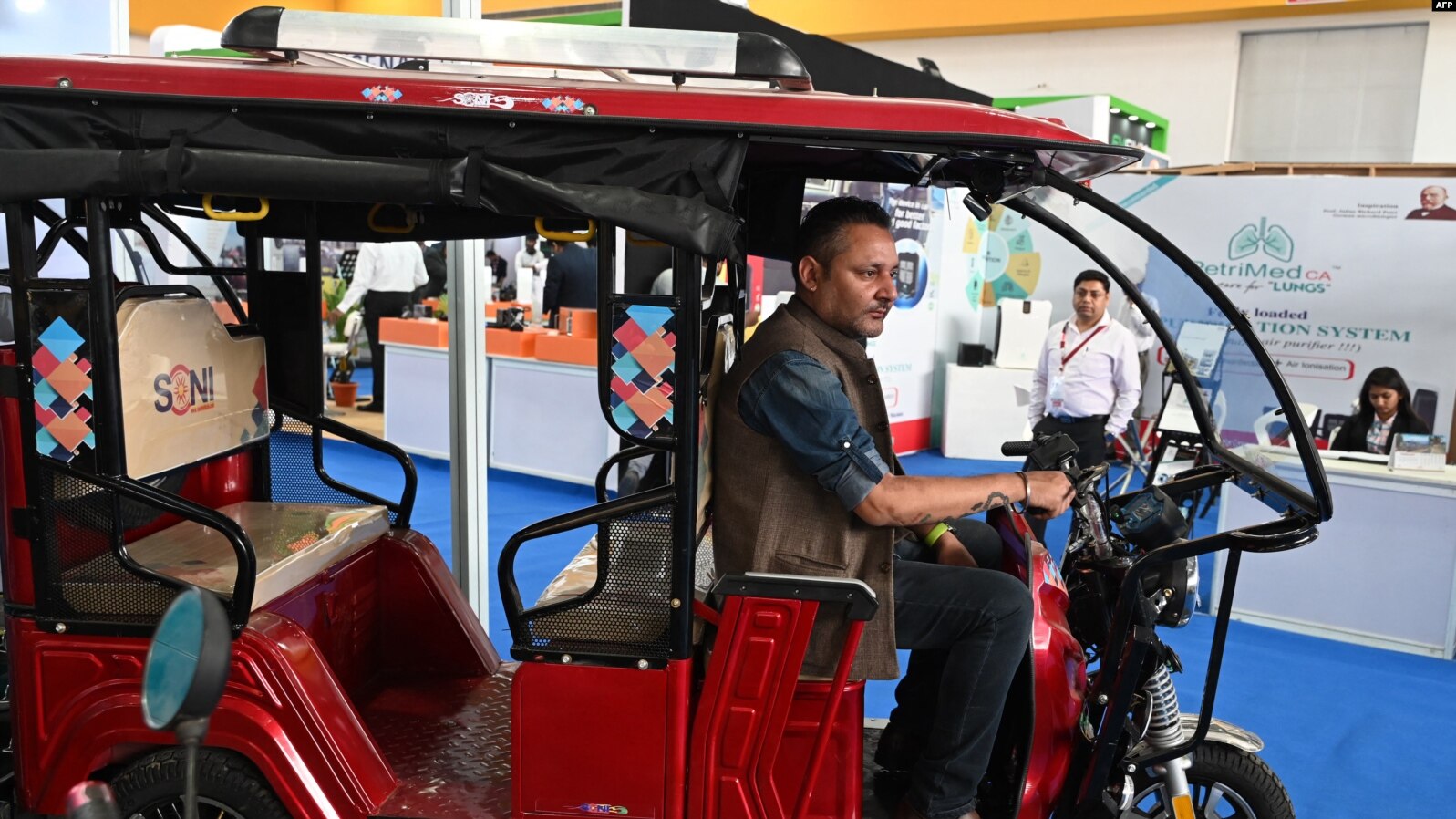At bus and metro stations in India’s capital and nearby cities, commuters have become accustomed to the familiar shouts of three-wheeled e-rickshaw drivers demanding eight-cent rides to their offices, homes or markets.
The taxi industry is booming, according to hundreds of rickshaw drivers thronging the streets.
“It’s much better than a petrol car. It’s non-polluting and cheaper to run. Once charged, my battery lasts for 80-120 kilometers,” Abdul Alam stood near the car in Gurgaon Saeed near the metro station. A commercial hub where thousands of passengers from New Delhi arrive every day.
In India, most electric vehicles are not cars, but three-wheelers used for carrying passengers and cargo, or two-wheelers used for personal travel. They account for 90% of the country’s nearly 3 million electric vehicles and are at the forefront of India’s transition to clean transportation.
This is not surprising – in developing countries like India, these cars are an affordable form of transport.
“The market basically drives it and takes care of the last mile of the journey,” said Moushumi Mohanty, head of electric vehicle technology at the Center for Science and Environment in New Delhi.
They are growing in popularity as federal and state government subsidies to manufacturers and tax incentives reduce costs. Rising gas prices in recent years have made them even more attractive.
Adhir Bhiya, an office assistant, quit his job three years ago and took out a $1,500 loan to buy his own rickshaw. “I spend about $25 every month to recharge the battery. This provides good income for my family,” Bhiya said.
With e-commerce booming, electric three-wheelers are also playing a key role in delivering goods to customers. Experts say road transport increases carbon emissions as people increasingly prefer the convenience of ordering everything from groceries to clothing online.
Zyngo EV Mobility, a three-year-old startup, uses an all-electric fleet to make about 20,000 deliveries a day in and around Delhi.
“We wanted to create something more futuristic,” said Zyngo founder Pratik Rao. “Sustainability is something we care about very much. We are all new generation people, we are a very young and highly motivated team and we thought that somewhere along the way we were contributing to the ecosystem, why not? So we introduced “Electric vehicles. as a core technology that allows us to help reduce carbon emissions.”
Rao took inspiration from the COVID-19 pandemic, when Delhiites saw clear blue skies instead of the usual gray that enveloped the city as cars disappeared from the roads during the lockdown and work-from-home order.
Switching from petrol or diesel cars to electric vehicles is important for the city. Delhi is one of the most polluted cities in the world: millions of vehicles clog it with toads and account for almost 10% of pollutant emissions into the air. Half that. Commercial vehicles are one of the largest sources of toxic fumes.
”It’s going to help a lot because look at the numbers that we’re trying to convert,” Mohanty said. “If you convert 10, 20 or 30 percent of these vehicles to electric, that’s essentially zero emissions.”
The government is pushing for rapid expansion in the coming years – Road Transport Minister Nitin Gadkari on Tuesday urged automakers to speed up the switch to electricity and biofuels to curb pollution from vehicles.
“Charging infrastructure is a pain point,” Rao said. “Charging infrastructure is evolving, especially in Delhi, but if we want faster adoption of electric vehicles in India, we need to accelerate the pace.”
Experts also said India needs to increase domestic battery production and improve battery technology. Although the batteries are assembled in India, most of the components are imported.
“We need to reduce our dependence on imports of critical minerals like lithium, cobalt, graphite and others from China,” said N.S. Thirumalai of the Center for Science, Technology and Policy Research in Bengaluru. “We need to reduce supply chain risks “. and consider other countries.”
India also needs to develop batteries suitable for local conditions. “It’s hot and humid here, and our roads don’t always allow for smooth driving. So obviously you need batteries that can withstand high temperatures and strong vibrations,” Mohanty said.
The long-term challenge is the bigger challenge. In a country where coal still dominates electricity generation, the energy source that charges batteries must also be cleaned up.
Statement: The picture and text come from the Internet, compiled and published according to public information, reproduced for the purpose of disseminating information, if there is any infringement or violation, please contact us to delete. If you need to reprint or quote the materials of this article, please indicate the source.
Post time: Apr-10-2024
